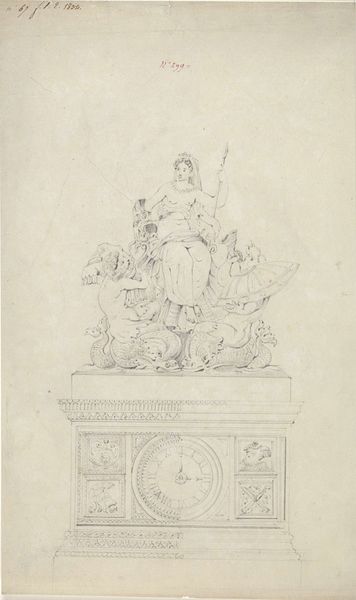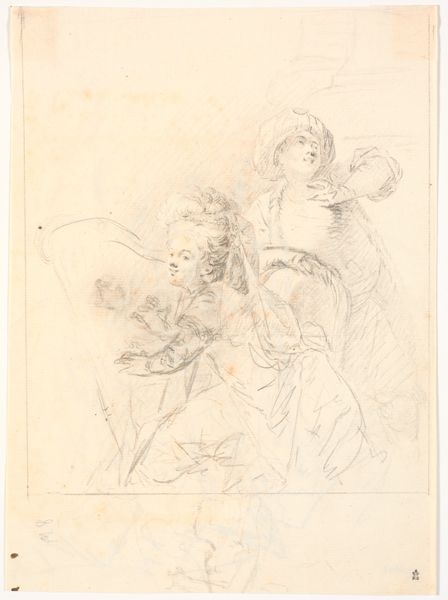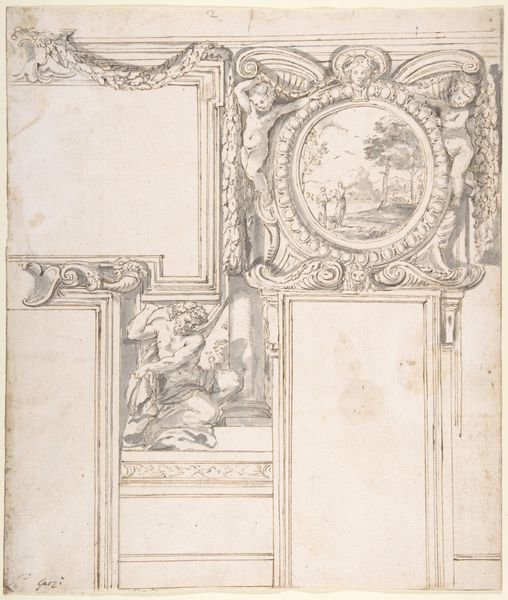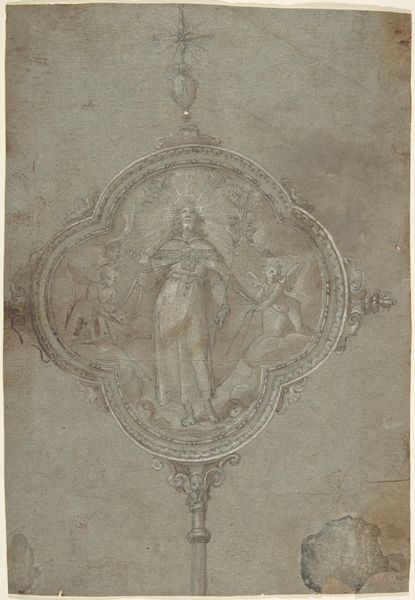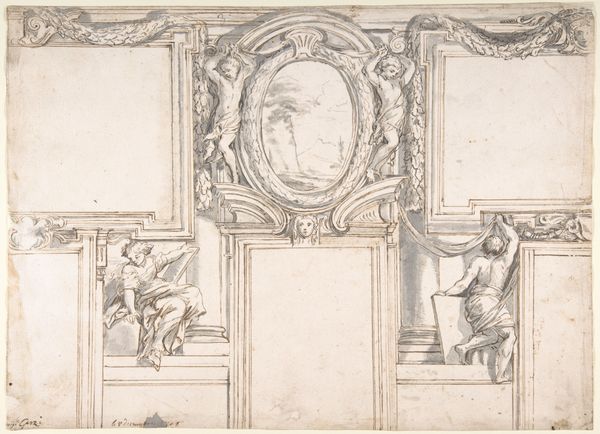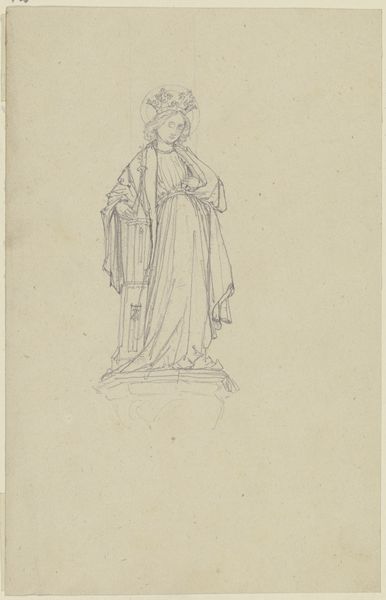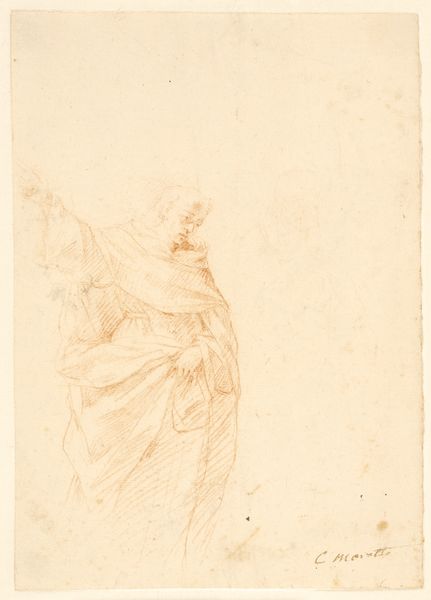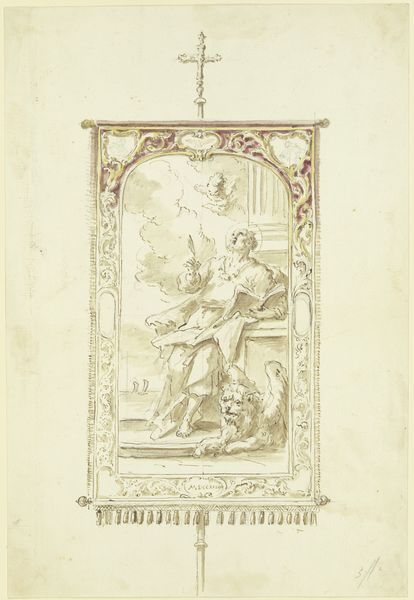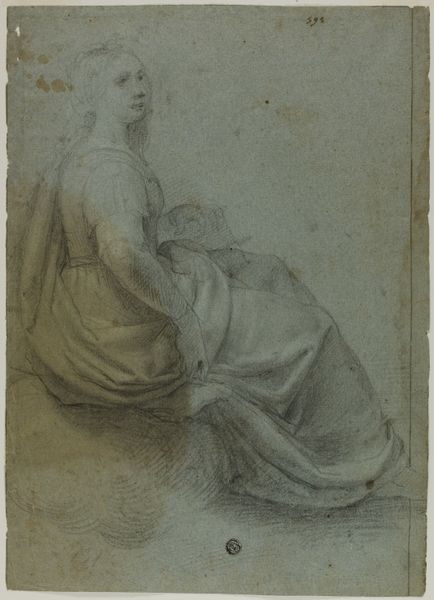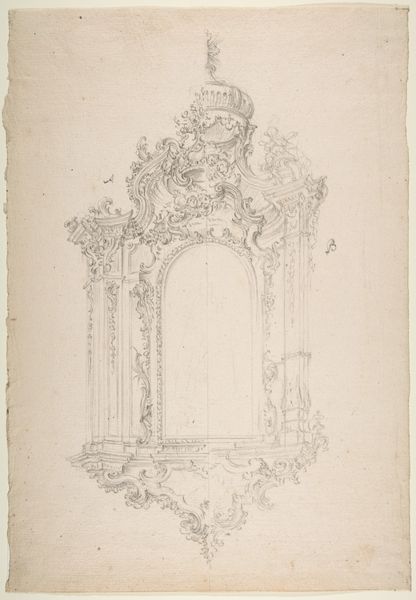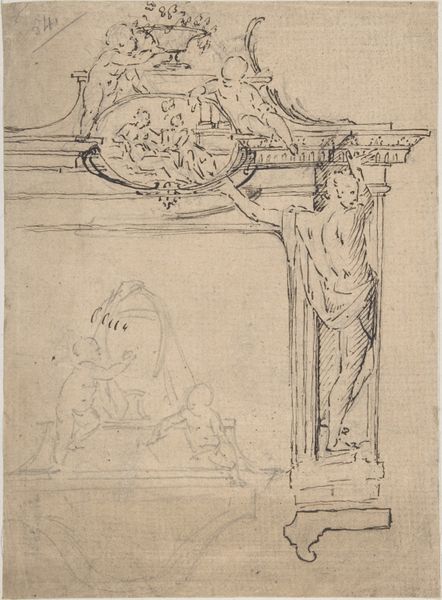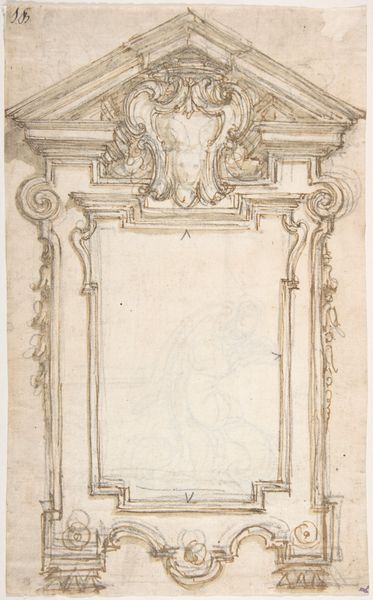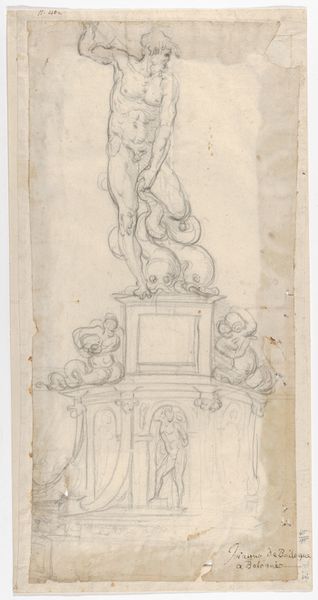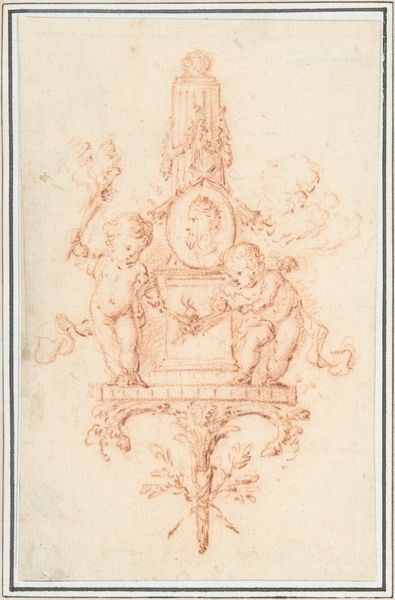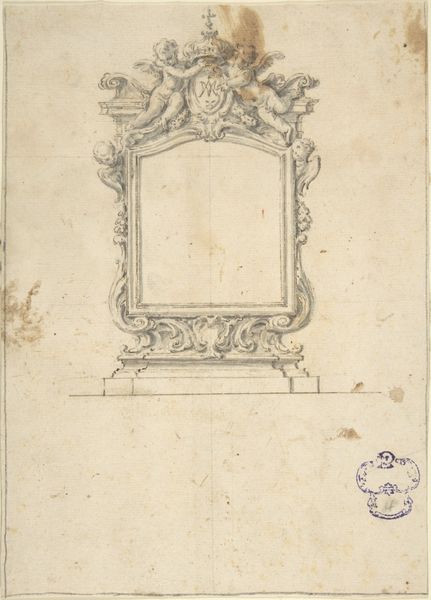
Two Rococo Frames, with Christ as Man of Sorrows in Upper Design 1800 - 1900
0:00
0:00
drawing, print, pencil
#
portrait
#
drawing
#
ink drawing
# print
#
figuration
#
classicism
#
pencil
#
history-painting
#
academic-art
#
christ
Dimensions: sheet: 17 3/4 x 13 7/16 in. (45.1 x 34.1 cm)
Copyright: Public Domain
Editor: This is an intriguing print called "Two Rococo Frames, with Christ as Man of Sorrows in Upper Design," dating roughly between 1800 and 1900. It seems to be an anonymous work currently held at the Metropolitan Museum of Art. The delicate lines and the subject matter give it such a somber, reverent feel. What draws your attention most when you look at this piece? Curator: I am interested in the relationship between the image of Christ and its Rococo frame. Rococo, with its emphasis on ornamentation and aristocratic tastes, seems at odds with the suffering depicted. Could this juxtaposition be a commentary on the church's role in society at the time, perhaps hinting at the perceived opulence versus the message of humility? Editor: That's a compelling point! I hadn't considered the tension between style and subject. Do you think this was a common critique of the Church in the 19th century, made visible through art? Curator: Absolutely, we see critiques throughout history. The visual language—combining the suffering Christ with a style associated with power and privilege—could be seen as a direct response to specific historical and social circumstances, holding institutions accountable through artistic expression. Consider the print as a medium; accessible to many, facilitating the spread of such critiques. Editor: It’s amazing how the artist could make such a poignant statement simply with a drawing. I never thought about it that way. Curator: And think about where this piece ended up—a museum. Its display there continues the conversation, doesn't it? Museums aren't neutral spaces; they're active participants in shaping how we understand art and history. Editor: That's so true. I’ll definitely look at art in museums with fresh eyes now, especially considering the context in which it was created and then displayed. Thanks for highlighting that!
Comments
No comments
Be the first to comment and join the conversation on the ultimate creative platform.
